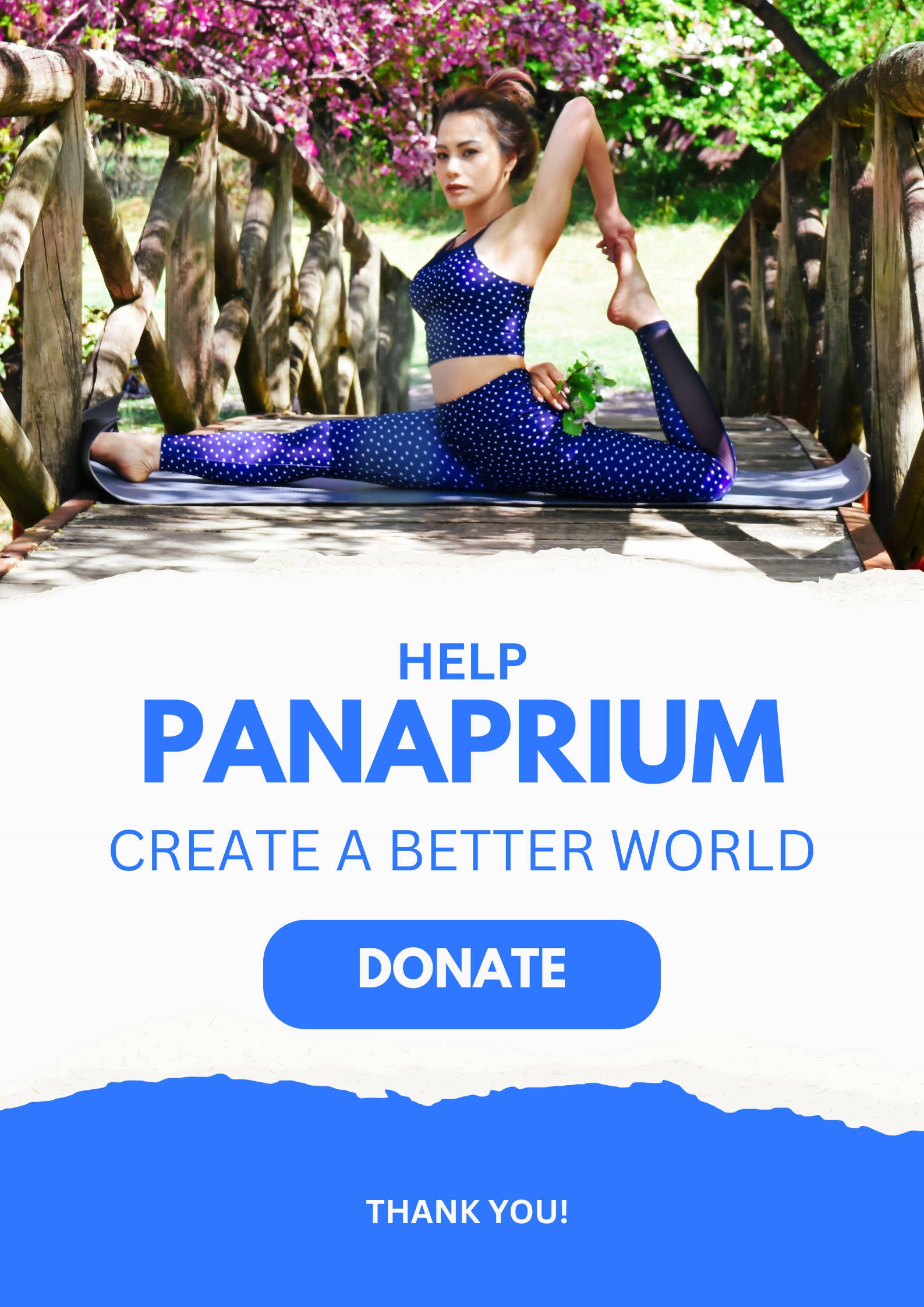
If you are looking to make environmentally conscious purchases, identifying greenwashing is one of your top priorities. Looking at a product's description, label, and packaging isn't enough to shop sustainably, especially in fashion.
To make more mindful purchasing decisions as a well-informed consumer, you want to quickly be able to recognize greenwashing and avoid taking a long time to carefully research every single fashion product you intend to buy.
A company is greenwashing when it's making misleading claims about the environmental benefits of its product or service. This marketing practice is used to make it appear more environmentally friendly than it truly is.
Companies claiming to be green without evidence are greenwashing, trying to differentiate themselves from the competition, and appeal to eco-conscious consumers.
Greenwashing is a marketing strategy used to increase sales and position brands in a better light. It aims to show what consumers want to see without enough care for the environment.
Here is everything you need to know about how to identify greenwashing in fashion and other industries to make better purchases and avoid terrible consequences on the economy, society, and the environment.
Panaprium is independent and reader supported. If you buy something through our link, we may earn a commission. If you can, please support us on a monthly basis. It takes less than a minute to set up, and you will be making a big impact every single month. Thank you!
1. Fluffy language, words, or terms

What is fluffy language?
A business or organization is greenwashing when it's using fluffy language, words, or terms with no clear meaning. Fluffy language hides what is truly going on behind the scenes with a green facade.
Fluffy words are soft or cute words that companies sometimes use to trigger emotions by positively describing a product or service. It remains however extremely superficial without any significance regarding its environmental impact.
How to identify fluffy language
When shopping for environmentally conscious products, try to look for fluffy language, words, or terms that are potentially subject to greenwashing.
Read product descriptions and labels to find terms like pure, natural, earth-friendly, eco-friendly, organic, green, pretty, soft, beautiful, downlike, cottony, etc.
Even expressions like reduced emissions, sustainable development, carbon-neutral, plant-based, among others can be misleading.
Example of fluffy language in fashion
One meaningful example of fluffy language in fashion is natural, biodegradable, sustainable viscose made from wood pulp. While these terms might appear positive at first for the environment, they are also deceptive in this case.
Viscose is also known as viscose rayon, a textile made of semi-synthetic polymers or regenerated cellulosic fibers that need tons of toxic chemicals in production.
Viscose rayon is of natural origin but still requires hazardous substances such as carbon disulfide, sulfuric acid, ammonia, acetone, or caustic soda to transform wood pulp into a viscous solution.
Visit Benetton's sustainability page on viscose and see if you can spot an example of greenwashing from this global fashion brand based in Ponzano Veneto, Italy.
2. Dirty companies making green products
![dirty fashion company greenwashing]()
What are dirty companies?
Dirty companies are greenwashing by tapping into the good conscience of consumers. We often make emotional decisions when buying products, especially clothes and other fashion items.
Adopting green business practices is a profitable strategy since consumers are willing to pay more for eco-friendly products. Dirty brands are making green products and greenwashing to gain a favorable public image and higher profit margins.
They employ farmers and workers from the poorest countries, exploiting local communities without any social or environmental stewardship, to make garments under poor working conditions, without renewable energy, and using toxic chemicals (dyes, fertilizers, pesticides).
How to identify dirty companies
The best way to identify dirty companies and avoid getting greenwashed is to investigate to separate the companies that are truly green from those that are only pretending.
Since it is not possible to combine sustainability and maximizing profit, greenwashing is everywhere, including fashion, but also in food, travel, transport, beverages, cleaning products, automobile, consumer electronics, personal care, and cosmetics.
Dirty companies often make claims "in a vacuum." They aren't transparent enough, they don't provide independent verification, they don't know their products' biggest impacts, and don't enable or encourage consumers to act.
Example of dirty fashion companies
Dirty fashion companies don't care that much about their impact on the planet, animals, and humans. They are often associated with sweatshops where staff members work under unsafe conditions, aren't paid a decent living wage, and receive no healthcare.
Unfortunately, there are too many dirty fashion companies to list them all. If you want to drive change in the fashion industry, read our list of fast fashion brands to avoid and see some examples of sloppy businesses.
3. Suggestive pictures and green images

What are suggestive pictures?
Oftentimes, suggestive pictures and green images indicate an unjustified green impact. Businesses are greenwashing with eco-friendly products, expecting high growth from a favorable public image and higher profit margins.
However, this is a deceptive marketing practice that is damaging to reputation. And Consumers are very likely to punish companies using greenwashing, suggestive pictures, and green images with fewer sales.
How to identify suggestive pictures
Simply look for a green aesthetic and presentation of products and services, placed in nature, in a beautiful, peaceful, lush, leafy, grassy, flourishing environment.
The color green is often anchored in the mind of consumers with eco-friendliness. However, a greenish background doesn't necessarily attest to low environmental impact.
It's very also important as a conscious consumer to not fall into the green visuals trap with blooming flowers, trees, bamboo pictures, or eco-responsible logos. They are simply misleading to make products appear sustainable.
Example of suggestive pictures in fashion
& Other Stories is a brand that offers clothing and accessories for women in Europe, Asia, and the United States. It uses imagery and wording of artisanally produced garments created in Swedish, French, and American ateliers under labor protection laws.
However, in reality, only the design of & Other Stories' products takes place in Paris, Stockholm, and Los Angeles. The fashion brand employs production facilities in faraway countries where labor is extremely cheap, such as China and Bangladesh.
Unfortunately, it shares the same abusive practices and sweatshop-like work environments as the fast fashion retail giant H&M.
4. Irrelevant claims
![irrelevant claim identify greenwashing fashion]()
What are irrelevant claims?
Irrelevant claims or hidden trade-offs often emphasize one tiny green attribute when everything else isn't green. Products making green claims are most of the time guilty of greenwashing.
People want products that are better for the environment, without misleading claims or marketing messages. Irrelevant claims are simply there to slow down sustainability efforts drastically.
They make it more difficult for consumers to understand the impacts of their purchasing decisions as they struggle to differentiate between valid and invalid claims.
How to identify irrelevant claims
You can easily identify irrelevant claims or hidden trade-offs as soon as you recognize environmental-related claims that emphasize one small characteristic over everything else to push the eco-friendliness of a product or service.
Brands and retailers often claim that some of their products are natural, organic, bio, or recycled. But only a portion of the materials used truly is (fibers and fabrics, trims, tags, labels, or packaging).
But many green-labeled products or services don't have the environmental benefits they claim. Companies often narrow a set of attributes and present no supportive information.
Irrelevant claims or hidden trade-offs often show environmental attributes that don't refer to a product, a service, packaging, but only a portion of any of these. They overstate the environmental benefit, explicitly or by implication.
They are misleading by nature and are cases of greenwashing. Avoiding deceptive environmental claims should be a concern to all companies.
Example of irrelevant claims in fashion
H&M is a very popular fast-fashion brand and Swedish retail company that produces clothing cheaply for all ages. H&M launched a green clothing line called Conscious collection in 2019.
The company used more environmentally friendly materials such as organic cotton and recycled polyester to make new garments. However, used deceptive tactics and vague sustainability claims to advertise their new clothes and make themselves appear more environmentally friendly.
H&M mislead consumers by using colors, symbols, and statements portraying its collection as more sustainable than it is. The company had to apologize to consumers for the promotion of its Conscious collection as demanded by the Norwegian Consumer Authority.
H&M recycling program is another example of greenwashing. Only a small portion of textiles can be recycled. Recycling is a very complex and resource-intensive process, especially when various fibers are blended to enhance fabric properties.
5. Slightly green products
![green packaging identify fashion greenwashing]()
What are slightly green products?
Slightly green products are made by dirty businesses or organizations that claim a product or service is slightly greener than the rest, even if the rest are pretty terrible.
Many companies claim to reduce their environmental impact when in fact a large proportion of their activities remains detrimental to the planet. They are greenwashing by claiming green production or features are hiding the rest.
It's an extremely unethical and condemnable practice that uses greenwashing to solicit consumers' trust and make more money from higher profit margins and a favorable public image.
Slightly green products are the easiest solution for businesses that don't have the willingness or the ability to deliver on what eco-aware consumers are expecting.
How to identify slightly green products
You can easily identify slightly green products from businesses that want to appear eco-friendly by claiming that their products have a lower impact on the environment when, in reality, their activities remain highly polluting.
Slightly green products mislead consumers by showing environmental qualities that are better than the rest. But the businesses behind them aren't making enough effort to reduce their carbon footprint, waste, pollution, energy, and water consumption.
This type of greenwashing causes consumers to support companies that destroy the planet and ecosystems unknowingly. Businesses making slightly green products still have a large proportion of their activities damaging to the planet and its inhabitants.
Example of slightly green products in fashion
Zara is a Spanish apparel retailer based in Arteixo in Galicia and part of the world's largest apparel retailer, the Inditex group. It launched many eco-friendly collections over the years such as "Join Life".
Zara is using materials like organic cotton, recycled wool, and Tencel lyocell. It also pledged to stop using toxic chemicals to manufacture its clothing.
However, using some eco-friendly fabrics isn't nearly enough to have a significantly lower environmental impact. The large majority of Zara's business activities remain disastrous to the planet.
6. Unreliable claims
![unreliable claim identify greenwashing fashion]()
What are unreliable claims?
Unreliable claims are just not credible and not trustworthy. Companies often only show what consumers want to see and only very few of them take the necessary time to carefully research each product before buying.
Unreliable claims are made by companies that don't provide any supporting evidence. Consumers should be able to quickly get more information by going to Google and looking up the products.
Unfortunately, many businesses and organizations are greenwashing by committing to environmental protection without any proof to back up the environmental impact of their business activities.
How to identify unreliable claims
When shopping for eco-friendly products, try to look for environmental claims that are simply not credible with no proof to back them up. Whether on the packaging or in advertisements, unreliable claims provide little to no evidence to explain.
Companies that are greenwashing don't have any hard data that can support their eco-friendly claims. They can't bolster their claims with independent verification.
Any comparative claim should clearly present the basis for the comparison. And every environmental message should be clear and prominent, taking into consideration relevant language and proximity to the subject without enough proof to back it up.
Try to look for supporting evidence on the companies websites and/or ask them to provide proof for what they are claiming. See if they provide any relevant certifications to testify to the eco-friendliness of their products.
Example of unreliable claims in fashion
ASOS is a British online fashion and cosmetic retailer that sells its range of clothing and accessories as well as many products from other fashion brands.
The fast-fashion giant recently started to introduce more sustainable materials in its product portfolio. It created a new collection called Responsible edit.
ASOS is "giving you the confidence to shop with both sustainability and style." It aims to reduce crude oil use and greenhouse gases and lower the impact on the planet and keep things circular.
ASOS uses "sustainable fibers and fabrics, which use less water and exert less waste along the way." It strives to make better products for the environment, without compromising style.
In reality, only a small portion of materials are recycled and made from renewable resources. Many textiles used in the collection remain highly damaging to the environment and human health.
7. Jargon
![jargon identify greenwashing fashion]()
What is jargon?
Jargon is a group of special words or expressions or information that only a scientist could check or understand. It's used by a profession or group and is quite difficult for others to get what it means.
This type of specialized terminology is greenwashing and is often used as a marketing practice to confuse consumers. It makes it more difficult for eco-conscious consumers to shop for truly eco-friendly products.
How to identify jargon
You can easily identify jargon when a company is using words, terms, or language that is difficult for you to understand. This is a global phenomenon that is unfair and deceptive to most people.
While sustainability is a very complex, elaborate, and intensive topic, understanding the social and environmental impact of products shouldn't be complicated.
Using deceptive tactics and vague sustainability claims is greenwashing and should be avoided. It often attests to the lack of transparency that many organizations suffer from.
Example of jargon in fashion
Primark is an Irish fast-fashion retailer that sells mass-produced clothing at very low prices because it employs workers in the poorest countries from East Asia such as Myanmar, Cambodia, and Bangladesh.
Many cases of child labor and forced labor were reported in Primark's factories. Thankfully, the fashion retailer is taking steps in the right direction to ensure that modern slavery and human trafficking are not taking place in its supply chains.
However, the regular updates and information the company provides are particularly difficult to understand for consumers since they often are written in response to a special group's request for information.
8. Fabricated data
What is fabricated data?
Fabricated data is made by companies that purposefully want to misrepresent their product or service by making up false results or information.
They write data intending to give a false impression to conscious consumers looking for eco-friendly products with a low environmental impact.
Fabricated and falsified data is a form of greenwashing when it refers to the environmental attributes of a consumer product and made by businesses that expect higher profits.
Fabricating data is essentially lying with information that is unproven or untrue. It's illegal marketing and misleads consumers into thinking that a product is eco-friendly when in reality it isn't.
How to identify fabricated data
Try to look for environmental claims with supportive data that are intentionally aimed at soliciting buyers. Identifying fabricated data is arguably very difficult to do for most people.
Fraudulent datasets are hard to detect and the only reliable way to spot them is to replicate the presented results. However, any valid claim should always come with independent verification.
There have been recently some cases that came to light of very well-known companies using data fabrication. This misleading practice is detrimental to business and society and shouldn't exist anymore.
Was this article helpful to you? Please tell us what you liked or didn't like in the comments below.
About the Author: Alex Assoune
What We're Up Against
Multinational corporations overproducing cheap products in the poorest countries.
Huge factories with sweatshop-like conditions underpaying workers.
Media conglomerates promoting unethical, unsustainable products.
Bad actors encouraging overconsumption through oblivious behavior.
- - - -
Thankfully, we've got our supporters, including you.
Panaprium is funded by readers like you who want to join us in our mission to make the world entirely sustainable.
If you can, please support us on a monthly basis. It takes less than a minute to set up, and you will be making a big impact every single month. Thank you.




































0 comments